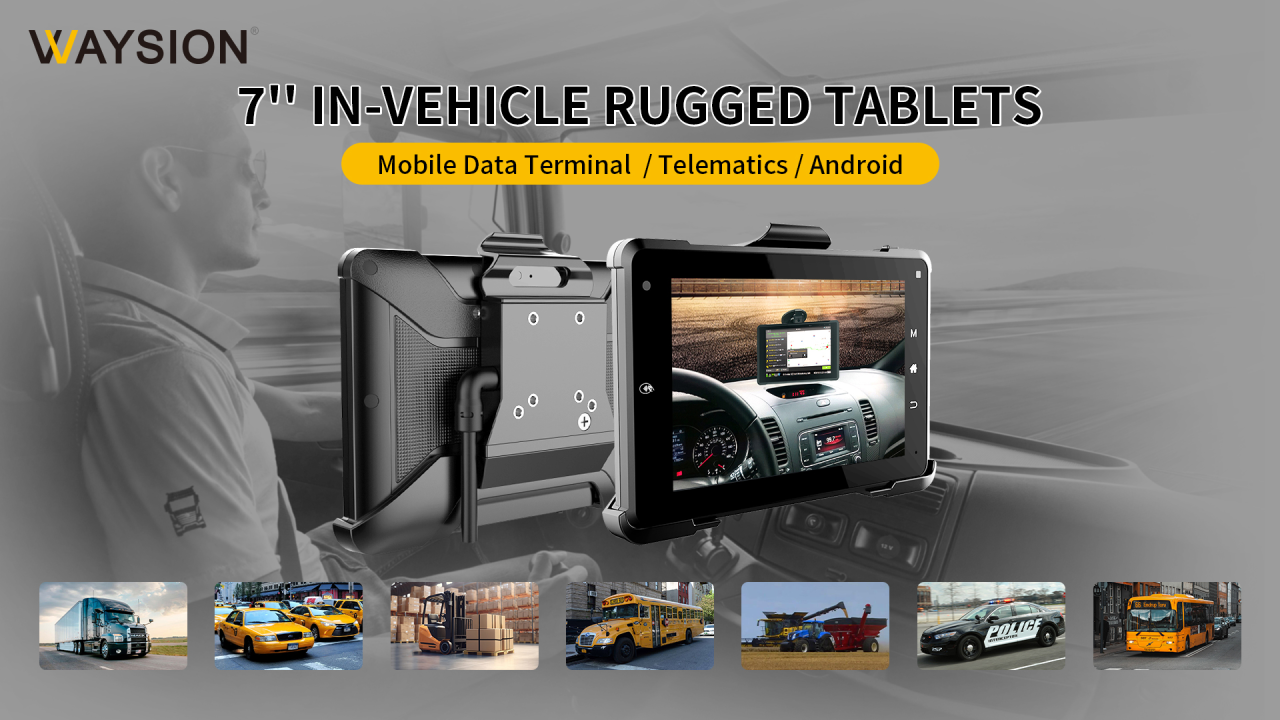In the fast-paced world of warehousing and logistics, efficiency is key. Forklift mounted computers have emerged as a game-changing technology, transforming the way warehouses operate and boosting productivity across the supply chain. This comprehensive guide explores the world of forklift mounted computers, their benefits, and how they’re reshaping the future of material handling.
What Are Forklift Mounted Computers?
Forklift mounted computers, also known as vehicle mounted terminals (VMTs) or vehicle mounted computers (VMCs), are rugged computing devices designed specifically for use on forklifts and other material handling equipment. These robust machines combine the power of modern computing with the durability required to withstand the harsh conditions of warehouse environments.
The Benefits of Forklift Mounted Computers
Integrating computers into forklifts offers numerous advantages:
1. Real-time Data Access: Operators can access inventory information, pick lists, and shipping details instantly.
2. Improved Accuracy: Barcode scanning and real-time updates reduce errors in picking and inventory management.
3. Enhanced Productivity: Eliminate the need for paper-based systems and reduce manual data entry.
4. Better Space Utilization: Optimize warehouse layout and inventory placement with data-driven insights.
5. Increased Safety: On-screen safety checklists and alerts help prevent accidents.
6. Streamlined Communication: Instant messaging and task assignment capabilities improve team coordination.
Key Features and Specifications
When selecting forklift mounted computers, consider the following features:
– Rugged Design: Look for devices with high IP (Ingress Protection) ratings and MIL-STD-810G certification for durability.
– Screen Size and Readability: Opt for displays that are easily readable in various lighting conditions.
– Processing Power: Ensure sufficient performance for running warehouse management software (WMS) and other applications.
– Connectivity: Wi-Fi, Bluetooth, and cellular options for constant communication.
– Input Methods: Touchscreens, physical keyboards, and support for barcode scanners.
– Mounting Options: Flexible mounting solutions to fit various forklift models.
– Battery Life: Long-lasting power to support full shifts without interruption.
Types of Forklift Mounted Computers
There are several types of computing solutions for forklifts:
1. Fixed Mount Computers: Permanently installed devices designed for long-term use.
2. Vehicle Mounted Tablets: Removable tablet computers that can be used on and off the forklift.
3. Wearable Devices: Complementary technology like wrist-mounted computers or smart glasses.
Installation and Integration
Installing forklift mounted computers typically involves:
1. Choosing appropriate mounting hardware
2. Ensuring proper power supply connection
3. Integrating with existing warehouse management systems
4. Setting up wireless infrastructure for seamless connectivity
5. Training operators on proper use and maintenance
Industry Applications and Use Cases
Forklift mounted computers find applications across various industries:
– Retail Distribution Centers: Streamlining order fulfillment and inventory management.
– Manufacturing: Supporting just-in-time production and material movement.
– Food and Beverage: Ensuring proper handling and traceability of perishable goods.
– Automotive: Managing complex supply chains and assembly line logistics.
– Pharmaceuticals: Maintaining strict quality control and regulatory compliance.
Leading Brands and Products
Several manufacturers offer high-quality forklift mounted computers:
1. Zebra Technologies: The [VC8300] series offers a powerful Android-based solution.
2. Honeywell: The [Thor VM1A] combines versatility with rugged design.
3. Waysion:The[Q777] The q777 is mainly used for rugged in-vehicle tablet.
3. Advantech: The [DLT-V72 Series] provides high performance in a durable package.
4. JLT Mobile Computers: The [JLT6012™] offers a compact form factor with powerful features.
Maintenance and Durability Considerations
To ensure longevity and optimal performance:
1. Implement regular cleaning and inspection routines
2. Train operators on proper handling and care
3. Use protective covers when not in use
4. Keep software and firmware up to date
5. Have a plan for quick repairs or replacements to minimize downtime

ROI and Productivity Improvements
Investing in forklift mounted computers can yield significant returns:
– Reduce picking errors by up to 30%
– Increase productivity by 10-20%
– Decrease training time for new operators
– Improve inventory accuracy to 99.9% or higher
According to a study by VDC Research, companies implementing forklift mounted computers reported an average ROI period of 12-18 months.
Future Trends in Forklift Mounted Computing
The future of forklift mounted computers looks promising with emerging trends such as:
1. AI and Machine Learning: Predictive maintenance and intelligent route optimization.
2. Augmented Reality (AR): Enhanced picking and navigation capabilities.
3. IoT Integration: Connected fleets for comprehensive asset management.
4. Advanced Battery Technology: Longer-lasting power solutions with fast charging capabilities.
5. Voice-Activated Controls: Hands-free operation for increased efficiency and safety.
Frequently Asked Questions
1. Q: How do forklift mounted computers improve warehouse safety?
A: They provide real-time safety checklists, alert operators to potential hazards, and can integrate with telematics systems to monitor operator behavior.
2. Q: Can forklift mounted computers work offline?
A: Many models offer offline functionality with data synchronization once connectivity is restored.
3. Q: What is the typical lifespan of a forklift mounted computer?
A: With proper care, these devices can last 5-7 years or more in industrial environments.
4. Q: How do forklift mounted computers integrate with existing warehouse management systems?
A: Most devices support standard interfaces and protocols, allowing for seamless integration with popular WMS solutions.
5. Q: Are there specific regulations regarding the use of forklift mounted computers?
A: While there are no specific regulations for the computers themselves, their use must comply with general forklift safety standards and data privacy regulations.
Summary
Forklift mounted computers have become indispensable tools in modern warehousing and logistics operations. By providing real-time data access, improving accuracy, and enhancing overall productivity, these rugged devices are revolutionizing material handling processes. As technology continues to evolve, forklift mounted computers will play an increasingly crucial role in optimizing supply chain efficiency and driving business success in competitive markets. When considering the implementation of forklift mounted computers, it’s essential to carefully evaluate your specific needs, choose the right hardware and software solutions, and provide proper training to maximize the benefits of this transformative technology.
link:https://www.waysion.com/blog/forklift-mounted-computers/
评论
发表评论